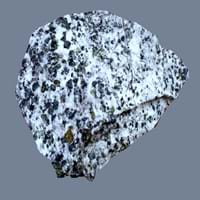Definition
Laterite rock is a type of Sedimentary rock which is rich in iron and aluminium, formed in hot and wet tropical areas
Carbonatite is intrusive or extrusive igneous rock which is defined by mineralogic composition, consisting of greater than 50 percent carbonate minerals
Discoverer
Francis Buchanan-Hamilton
Unknown
Etymology
From Latin later brick, tile + -ite1
From any intrusive igneous rock, having a majority of carbonate minerals
Class
Sedimentary Rocks
Igneous Rocks
Sub-Class
Durable Rock, Soft Rock
Durable Rock, Soft Rock
Group
Not Applicable
Plutonic
Other Categories
Fine Grained Rock, Opaque Rock
Coarse Grained Rock, Fine Grained Rock, Medium Grained Rock, Opaque Rock
Texture
Earthy, Massive, Porphyritic
Granular, Poikiloblastic
Color
Brown, Buff, Red
Black, Brown, Colourless, Green, Grey, Pink, White
Durability
Durable
Durable
Appearance
Rough and Banded
Dull, Banded and Foilated
Interior Uses
Decorative Aggregates, Flooring, Interior Decoration
Decorative Aggregates, Interior Decoration
Exterior Uses
As Building Stone, As Facing Stone, Garden Decoration
As Facing Stone, Garden Decoration
Other Architectural Uses
Curbing
Curbing
Construction Industry
Cobblestones, for Road Aggregate, Landscaping, Roadstone
As a Flux in the Production of Steel and Pig Iron, As a Sintering Agent in Steel Industry to process Iron Ore, As Dimension Stone, Cement Manufacture, for Road Aggregate, Making natural cement, Manufacture of Magnesium and Dolomite Refractories, Unknown, Unknown
Medical Industry
Not Yet Used
Taken as a Supplement for Calcium or Magnesium
Antiquity Uses
Artifacts, Monuments, Sculpture
Artifacts
Commercial Uses
An Oil and Gas Reservoir, Source of bauxite, Used in aquariums
An Oil and Gas Reservoir, As a Feed Additive for Livestock, Gemstone, Metallurgical Flux
Types
Not Available
Not Available
Features
Is one of the oldest rock, Very fine grained rock
Available in lots of colors, Generally rough to touch, Is one of the oldest rock
Archaeological Significance
Monuments
Used
Not Yet Used
Famous Monuments
Data Not Available
Not Applicable
Sculpture
Used
Not Yet Used
Famous Sculptures
Data Not Available
Not Applicable
Figurines
Used
Not Yet Used
Formation
Laterite is a type of sedimentary rock which is generally a reddish weathering product of basalt.
Carbonatites are intrusive or extrusive igneous rocks which are defined by mineralogic composition consisting of greater than 50 percent carbonate minerals and are formed due to low degrees of partial melting of rocks.
Mineral Content
Aluminum Oxides, Biotite, Hematite, Hornblade, Iron Oxides, Manganese Oxides, Micas, Muscovite or Illite, Plagioclase, Pyroxene
Ancylite, Apatite, Barite, Fluorite, Magnetite, Natrolite, Sodalite
Compound Content
Aluminium Oxide, CaO, Iron(III) Oxide, FeO, Potassium Oxide, MgO, MnO, Sodium Oxide, Phosphorus Pentoxide, Silicon Dioxide, Titanium Dioxide
CaO, Carbon Dioxide, Sodium Oxide
Types of Metamorphism
Not Applicable
Burial Metamorphism, Contact Metamorphism
Types of Weathering
Biological Weathering, Chemical Weathering
Biological Weathering, Chemical Weathering, Mechanical Weathering
Types of Erosion
Chemical Erosion, Water Erosion, Wind Erosion
Chemical Erosion, Wind Erosion
Grain Size
Fine Grained
Medium to Fine Coarse Grained
Fracture
Conchoidal
Conchoidal
Porosity
Highly Porous
Less Porous
Luster
Dull
Subvitreous to Dull
Cleavage
Not Applicable
Not Available
Toughness
Not Available
1
Specific Gravity
Not Available
2.86-2.87
Transparency
Opaque
Opaque
Density
Not Available
2.84-2.86 g/cm3
Resistance
Heat Resistant, Pressure Resistant
Heat Resistant, Pressure Resistant, Water Resistant
Deposits in Eastern Continents
Asia
India
China, India, Kazakhstan, Mongolia, Russia, Uzbekistan
Africa
East Africa, Western Africa
Namibia, Nigeria, South Africa
Europe
England, Romania, Scotland
Austria, Denmark, Germany, Great Britain, Netherlands, Norway, Poland, Sweden, Switzerland, United Kingdom
Others
Not Yet Found
Greenland
Deposits in Western Continents
North America
Canada, USA
Canada, USA
South America
Not Yet Found
Brazil
Deposits in Oceania Continent
Australia
Central Australia, Western Australia
New South Wales, New Zealand
All about Laterite and Carbonatite Properties
Know all about Laterite and Carbonatite properties here. All properties of rocks are important as they define the type of rock and its application. Laterite belongs to Sedimentary Rocks while Carbonatite belongs to Igneous Rocks.Texture of Laterite is Earthy, Massive, Porphyritic whereas that of Carbonatite is Granular, Poikiloblastic. Laterite appears Rough and Banded and Carbonatite appears Dull, Banded and Foilated. The luster of Laterite is dull while that of Carbonatite is subvitreous to dull. Laterite is available in brown, buff, red colors whereas Carbonatite is available in black, brown, colourless, green, grey, pink, white colors. The commercial uses of Laterite are an oil and gas reservoir, source of bauxite, used in aquariums and that of Carbonatite are an oil and gas reservoir, as a feed additive for livestock, gemstone, metallurgical flux.










